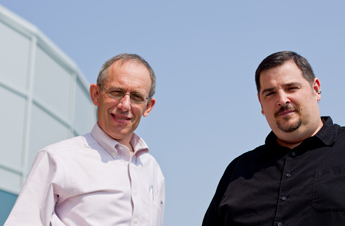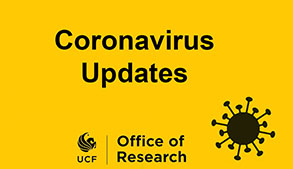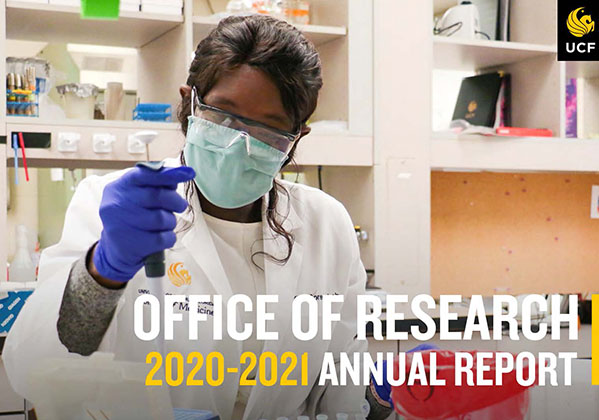GOLD May Help Prevent Space Storm Damage on Earth
May 18, 2011
A device that may help predict and prevent GPS and cell phone blackouts has been developed at the University of Central Florida.
Research scientists Richard Eastes and Andrey Krywonos have designed a specialized camera-like instrument called an ultraviolet imaging spectrograph. Once put into geostationary orbit on a commercial satellite, the spectrograph would continuously monitor the Earth's upper atmosphere.
The imager is part of a proposed space mission led by Eastes to study the response of the Earth's space environment to solar flares and other space weather. In addition to helping to predict bad weather in space, the imager eventually could help scientists devise ways to prevent such weather from causing blackouts.
Solar flares change the composition and temperature of the atmosphere around the earth and can damage military and commercial satellites, including those that help deliver satellite television or cell phone signals.
And with the Federal Aviation Administration moving to monitor air traffic with a sophisticated GPS system, accurate forecasts of space weather will be critical to prevent blackouts that could lead to aviation accidents.
"Space weather can be very dramatic," Eastes said. "We just don't hear a lot about it because, frankly, it's in space. But it does have an impact on earth."
The imager, named Global-Scale Observations of the Limb and Disk, or GOLD for short, will record images of ultraviolet light emitted by the atmosphere approximately 62 miles above the earth's surface. Measurements will be made from a satellite orbiting in sync with the earth, meaning data can be collected across the entire hemisphere throughout the day. The data will give scientists a clear picture of how the temperature and composition in the uppermost portions of the atmosphere respond to various influences, such as changes in the sun's output.
"Most of the information we have now comes from low-orbit observations, basically snapshots," Eastes said. "But our imager will give us 'movies' of the space environment and measurements that have never been available before."
Eastes and Krywonos, who conduct research at UCF's Florida Space Institute at Kennedy Space Center, have been working on GOLD since 2005. NASA has given the team almost $2 million to date, and Eastes has been working with a commercial satellite company for several years on plans to fly the imager into space.
"We're unusual in that we have a ride on a commercial communications satellite," Eastes said. "We're just waiting . . . hoping we get the go ahead to build one of these things and put it in space. Then the detective work, the science research, begins."
The latest NASA proposal for the project is under review, and the team is hoping to schedule a flight by 2017.
"Having our mission selected for flight would be very exciting," Krywonos said. "It would be the first NASA science mission led by UCF, and would be a major step forward in increasing UCF's role in space research."
Eastes joined UCF in 2001. He has master's and Ph.D. degrees in Physics from Johns Hopkins University, home of the Space Telescope Science Institute. Before coming to UCF, Eastes worked at the Air Force Research Laboratory. He is an assistant professor.
Krywonos received his Ph.D. in Optics from UCF in 2006. He joined the Florida Space Institute that year as a post-doctoral researcher, and he is currently a research scientist at the Florida Space Institute

